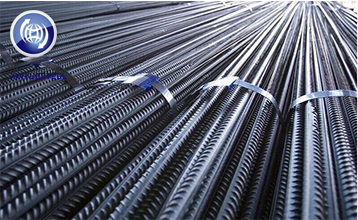Steel prices will return to fundamentals in the second half of the year
Aug. 04, 2021
Reviewing the operation trend of China's iron and steel industry in the first half of this year, it is mainly manifested in the following characteristics:
First, steel prices increased significantly year-on-year. In 2021, steel prices continued to rise after the Spring Festival, fell rapidly after hitting a record high in mid May, rebounded slightly in June and entered the shock adjustment market. The year-on-year increase in the price of steel varieties is mostly 30% ~ 50%. The prices of raw fuels such as iron ore and coal coke rose sharply year-on-year and month on month.
Second, there is strong demand in downstream industries. With the simultaneous development of domestic and foreign demand, China made a good start in the first quarter and all economic indicators improved. Driven by loose monetary policy and domestic and foreign demand, domestic steel demand has increased rapidly. This can be seen from the inventory. After the Spring Festival, the peak of total steel inventory reached 32 million tons. Under the strong demand, steel inventory maintained a rapid decline trend. From March to June this year, the total steel inventory decreased by more than 12 million tons, second only to the same period in 2020. By the end of June, the inventory of China's five major steel varieties had fallen to more than 21 million tons.
Third, steel production increased significantly. Stimulated by strong demand and high profits in the early stage, crude steel output increased significantly in the first half of the year. According to the data of the National Bureau of statistics, China's crude steel output reached 563.33 million tons in the first half of this year, a year-on-year increase of 64.32 million tons, an increase of 11.8%.

Fourth, strong demand for steel exports. Although China cancelled the export tax rebate of some steel in May, under the large price difference at home and abroad, China's steel export volume still increased significantly. In the first half of the year, China exported 37.382 million tons of steel, a year-on-year increase of 30.2%. In terms of import, due to the tight supply of foreign steel and the superposition that the price of foreign steel is much higher than that of domestic steel, China's steel import slowed down significantly. In the first half of the year, China imported 7.349 million tons of steel, a year-on-year increase of only 0.1%.
Fifth, the price of raw fuels has risen sharply. In the second quarter, affected by hurricane, rainstorm and other weather and port berth maintenance and other factors, the global shipment of iron ore decreased significantly, and the release of iron ore supply was slow. China's iron ore imports fell 6.66 million tons year-on-year in the second quarter. Due to the increment of demand, the decline of iron ore port inventory accelerated in the second quarter. In the state of tight supply, iron ore prices rose significantly.
Sixth, the industrial efficiency has been significantly improved. Driven by strong demand and limited production, the profits of steel enterprises rebounded significantly. The performance of 22 listed steel enterprises increased significantly in the first half of the year, and the net profit growth of most steel enterprises increased in multiples.
In the second half of the year, steel prices will gradually return to fundamentals. This is because the global inflationary pressure is great and the monetary policy may be tightened in advance; Domestic steel consumption decreased significantly. Overall, the market fundamentals will show the following characteristics:
First, production restrictions are becoming stricter, and the market supply may be tight. In the first half of the year, the overall production restriction was not very strong, the output of steel enterprises was fully released, and the production restriction task was heavy in the second half of the year. It is estimated that if we want to achieve the goal of "year-on-year decline in annual crude steel output", the average daily crude steel output in the second half of the year will be reduced by 350000 tons year-on-year. In this way, it is far from enough to limit production in Tangshan, Hebei Province.
Second, domestic demand is weakening as a whole, but it will not decline like a cliff. In the second half of the year, in order to cooperate with the reduction of crude steel output, the demand side reform will be carried out simultaneously, some non emergency infrastructure projects may slow down, the real estate will be further limited, and the downstream demand is uncertain.
Third, limit the production of bad raw materials, and the cost center of gravity may move down. In the second half of the year, under the policy of reducing crude steel output, local blast furnace production will be affected. It is expected that the demand for raw fuel will drop significantly, the iron ore supply will be loose, and the tight pattern of coke supply will also be alleviated. In this context, the cost of steel is expected to decline significantly.
Fourth, give priority to domestic supply, and steel exports will decline significantly. In order to cooperate with the reduction of crude steel output and ensure the domestic steel supply, the state has adjusted the steel export tax rebate policy again at the end of July. It is expected that the steel export volume in the second half of the year will be reduced by 10 million tons to 15 million tons compared with the first half of the year, and the steel export volume in the whole year will be 55 million tons to 56 million tons.



